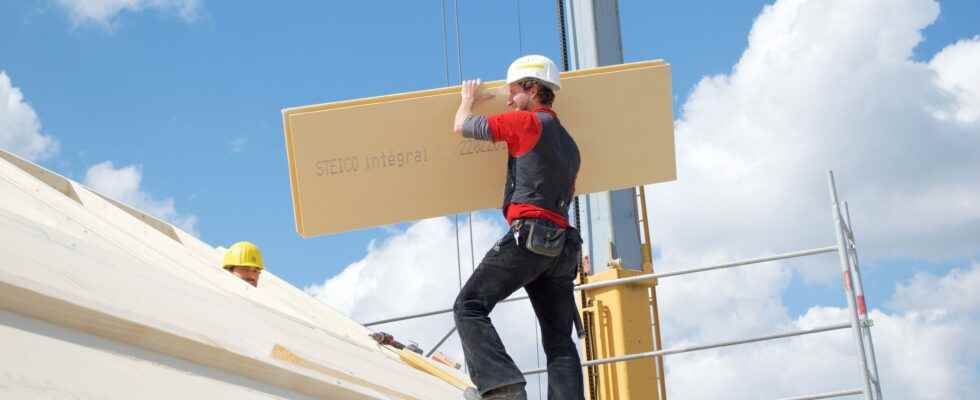The value of tomorrow is realized in partnership with Zonebourse.com
The fall of the Steico stock gives the opportunity to revisit the investment theory. The German company has indeed erased two years of increases in recent months. It was one of those values that skyrocketed between the March 2020 low and mid-2021. The course had been multiplied by more than seven, going from less than 18 to more than 130 euros. Before a long tumble which has led it to around 48 euros currently.
The Feldkirchen company specializes in wood fiber insulation materials. A positioning which of course arouses a certain enthusiasm, since it is at the crossroads of the themes of energy efficiency and the use of renewable resources. Especially on the Old Continent, where the news – a historical energy crisis – collides with a long-known reality: three quarters of the European building stock is thermally overwhelmed.
Steico manufactures several ranges of wood-based insulation. Including rainscreen and exterior insulation panels for construction, rigid and semi-rigid insulation and blow-in insulation. The company generates just over 40% of its revenue in its home market, Germany, which is ahead of France (12%) and the United Kingdom (10%). It has a small presence outside Europe, mainly in Australia and the United States (activities outside Europe represent around 7.5% of turnover). Sales have increased by an average of 10% per year over the past decade. They reached 388 million euros in 2021. Steico is therefore a Tom Thumb in a market that includes some heavyweights like Saint-Gobain, Kingspan or Rockwool. To steer its boat, management relies on the niche of ecological insulation.
So far things have been going pretty well, thanks to good pricing ability. The operating margin grew from single to double digits between 2018 and 2019 and has not left this zone since. The company’s earning capacity is largely devoted to the expansion of its production capacities, in Poland and France in particular, which results in negative free cash flows most of the time. The development policy remains cautious, however, as illustrated by net debt which will remain below 1.5 times EBITDA over the next three years. It should be noted, however, that Steico has been paying a small dividend since 2016.
A more complex reality
The drop in Steico shares is essentially the consequence of past market excesses. The valuation of the company has returned to a reasonable zone, which avoids having to tackle esoteric considerations such as “yes but it is a winner in the future” or “yes but its positioning is unique” to justify multiples wacky. The reality is that Steico is a nice little company, a priori well managed, in a buoyant market niche.
But are we also playing devil’s advocate? The reality is also that the interest rate context and the uncertain economic outlook in Europe are creating air pockets in the real estate market, which will sooner or later be visible in the accounts. This even if the theme of building insulation in a context of expensive energy offers powerful working capital. The reality is still that the competition is not standing idly by in the field of ecological insulation and that the rise in production costs also affects manufacturers.
Carrier currents and headwinds therefore. A situation clearly glimpsed in the publication of the group’s third quarter results at the end of October. Management has been forced to trim its growth ambitions slightly, proof that the underlying market is slowing down. This does not remove the company’s status as a value for the future, positioned on a market fueled by energy sobriety.
